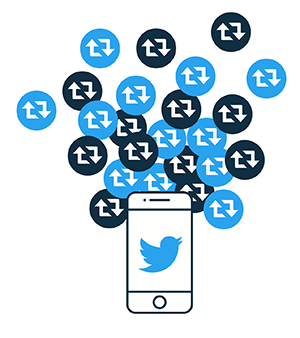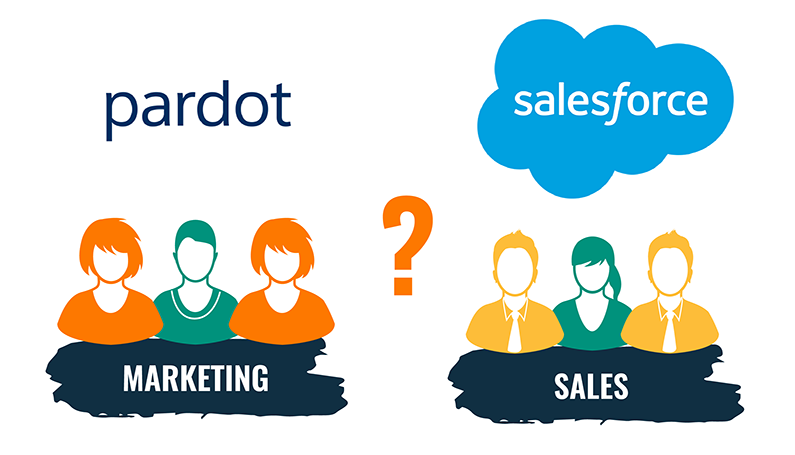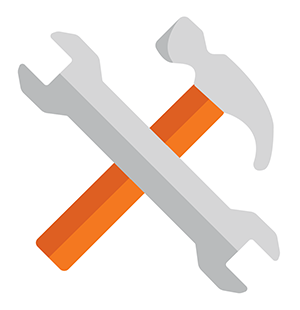Martech: Choosing the Right Software for Your Organization
Martech: Choosing the Right Software for Your Organization
Karina Schuelke | Director of Digital Strategy
July 6, 2018
Imagine you work for an organization that regularly uses Twitter to engage with potential prospects and customers.
It’s hard to manage all the different streams you have going on, so you decide that a dashboard showing all of your organization’s recent tweet streams would be useful.

While you’re reviewing dashboard options, you realize that retweeting from the same dashboard would probably be a helpful feature. So, you start looking for that feature as well. Finally, you find a dashboard you like, buy a few licenses, and get started using it.
In this scenario, do you think you would retweet more with a dashboard like that?
Probably.
You would probably also tweet more in general and adapt your workflow to best utilize the tool. Some of that you might have planned when you went looking for the tool, but some of it will likely come about because the tool has certain features and you wanted to start using them.
Just like that, you started with something useful and wound up by changing your behavior.
This is a really simple example, but it plays out in a 1,000 different ways across every martech stack.
MarTech And The Customer Journey
Why does it matter that you retweeted more, or modified your social media workflow? It matters because the software you select and how you implement it powerfully influences every aspect of the customer journey.
The process goes like this:

Software comes with a perspective. Even tools ostensibly doing the same things were developed by a different team, trying to solve slightly different problems, with their own specific preferences, ways of doing things, and biases. All of that feeds into the tool.
That perspective creates features which push you, the implementer or user, to make certain decisions in certain ways. Before you know it, the technology you’ve selected has influenced your customer journey, maybe significantly.
This is why Scott Brinker of ChiefMartec.com says “Marketers: You are the software you use.” It’s because it’s true.
How This Works
Salesforce owns a marketing automation tool called Pardot, which has a default that prospects sync from Pardot to Salesforce when a user assigns the prospect. So, the tool has the following perspective; once an individual is keeping an eye on the prospect, it should be in Salesforce, but not before.
If you accept the default Pardot functionality and you make that assigned user a salesperson, that will probably affect how you design tooling for your marketing and sales teams. You may consider an approach like this: “Okay, my marketing team will use Pardot, my sales team will use Salesforce, and does each team even need logins for the other’s tool?”
So, this feature impacts team interaction: which team members are in which tools, how they are trying to get their jobs done, how they are working together, just because of one simple feature around the Marketing Automation > CRM Sync.

Now it starts to affect prospects because I am emailing them out of different systems. Who are they getting the email from and what does it look like? What message am I trying to convey with the email? Who is it coming from (like marketing@companyname or an individual)? Text-based emails communicate differently than designed emails. If it’s personalized through dynamic content or manual inputs, that creates a different perspective as well, and what options you have there depend on the tool you’re using.
This isn’t good or bad - it just is. There are dozens of permutations like this with any marketing tool. For every piece of software you select and implement, you have to decide if the perspective it brings works for your team’s needs today.
Bringing This Thinking To Your Organization

Everyone wants martech that will solve their business problems. But not everyone realizes how critical it is to select martech that will meet your organization where it’s at and help you take the next step. A great piece of technology for you in 2 years will just result in frustration today. A great piece of technology for an organization just down the road might have your whole team stepping on one another’s toes trying to get work done.
That’s why SELECTION matters. It’s also why, if a piece of technology no longer delivers, it’s time to make a change. If you select and build your martech stack carefully, you can often extract pieces you don’t need anymore and add in new ones that can help you keep moving forward, or change how you’re using a current tool to make a new one more effective.
Understanding Your MarTech Stack Today And Planning For The Future
When you want to understand where you are and where you’re going, here are some questions you may want to consider asking yourself and your team:
- How do your prospects & customers or clients interact with your existing martech?
- How did you arrive at the technology choices you’ve made so far?
- What’s working really well?
- What needs improvement?
- Is anything completely broken for you or for your customers and clients?
- How do your tools integrate today?
- Who uses your martech internally on a daily basis? On a monthly basis? On an irregular basis?
- Who are the stakeholders needing data and information out of your stack?
As you plan for the future, take time to understand the relationship between your marketing technology today and the customer journey (or journeys) your prospects take so you can shape them together as you move forward.
Teams of People Use MarTech to Design a Customer Journey For...Other
When implementing martech, consider both internal and external needs. The internal needs are those of the people who have to use the tool to get things done. The external needs are those of the people the tool affects, typically the customer or internal stakeholders or both.
Examples of internal stakeholders might include executives needing to see reporting data, or maybe a sales team needing to understanding marketing activities so they can reach out to a prospect with just the right message.
Fundamentally, as you build a martech strategy and ecosystem, you have to remember it’s for the people involved, so matter what part they play.
Remember
Whether you set out to transform the customer experience or the internal experience or both...
Software has a perspective. That perspective shapes and defines just what the experience will be.
So - you are the software you use.


